Iran’s goal is clear—to destroy Israel. Hamas’ goal is clear—to destroy Israel. Hezbollah’s goal is clear—to destroy Israel. West Bank Palestinians, through their PA representatives goal is clear—to destroy Israel. Even the Houthis and Jihadi Iraqi goals are clear—to destroy Israel.
Their strategy? Fight an attrition-based war designed to wear Israel down; destroy its economy; degrade its military assets; depress its people; delegitimize Israel’s standing in the world; and drive Israelis to emigrate—then deal Israel a final blow.
Israel’s goals are also clear—to prosper as a Jewish nation that keeps its citizens safe and is a homeland for Jews worldwide, thrive as a democracy, and to have good relations with its Middle East neighbors and the rest of the world. But to accomplish that goal, it must survive and thrive. To do that it must decisively defeat the Jihadi terror armies that seek to strangle it. That requires tactics that cumulatively further a strategy for victory.
In Issue #58 of this Newsletter, on August 27, I wrote an essay titled Strategies for Israel in the Coming Days and Weeks. In it, I listed five strategic goals and strategies necessary for accomplishing them. One of them was to restore the ability of Israelis to live safely along, and near, Israel’s northern border with Lebanon while also significantly degrading Hezbollah’s ability to threaten Israel as a whole. Israel is now well along on the path towards accomplishing this goal because it has:
Killed Hezbollah’s capable leader, Hassan Nasrallah, and Hezbollah’s second, third and even fourth in command.
Killed many other Hezbollah leaders high, middle and low.
Killed much of the leadership of the Radwan force which Hezbollah created for the express purpose of doing in the north what Hamas did in the south on October 7.
Killed many low-level Hezbollah operatives.
Destroyed fifty percent or more of Hezbollah’s missiles including, by at least one estimate, 60% or more of its most dangerous precision guided or long-range strategic missiles.
Destroyed many of Hezbollah’s missile-launchers.
By virtue of the ground campaign the IDF initiated on September 30 (well before the winter rains will begin in earnest), Israel has begun the process of rooting out Hezbollah’s attack tunnels and military infrastructure in or near Shiite villages close to Israel’s border. I expect that operation will go further into south Lebanon in the coming days.
Interfered with Hezbollah’s communications and ability to manage the forces it still possesses.
Of course, Hezbollah has not been neutered and there are likely many more hard days to come (every day now Hezbollah sends more than 100 rockets into northern and central Israel), but the IDF has severely diminished Hezbollah’s ability to have an impactful effect. Frankly, Israel’s success is nothing short of a miracle considering where things stood in late August.
Now, due to Israel’s successful military operations, the Iranian octopus is beginning to look more like a spindly, aging spider—still able to deliver stinging bites but far less toxic than it once was. Hamas is a shadow of its former self, capable of creating havoc inside Gaza and eventually reconstituting if left alone, but presently incapable of threatening Israel. Hezbollah’s strength wanes with every passing day. And the Houthis were perhaps rocked back by an Israeli air strike in July and another on September 29 in which impressively dozens of Israeli fighter jets flew 1,200 miles to deliver a severe blow to Houthi oil reserves and military supplies in retaliation for Houthi missiles fired at Tel Aviv and central Israel. All of this unravels Iran’s plan for its proxies to keep jabbing Israel’s body until, with Israel’s defenses down and its morale weakened, Iran could deliver a knockout blow to the head that would end the Jewish state’s existence.
However, Iran still remains the central problem and there is an immediate need for Israel to teach it a hard lesson because on October 1, Iran sent 181 ballistic missiles hurtling through the skies towards Israel—perhaps in response to Nasrallah’s death, perhaps just to maintain credibility with its proxies, or perhaps due to Israel’s achievements with Hezbollah. Most were intercepted (some by the U.S. but the vast majority by the IDF). However, many got through—thirty-five struck a couple of IDF airbases and two landed near an intelligence headquarters in Tel Aviv. Fortunately, no Israelis died although one Palestinian in Jericho was killed by falling shrapnel from an intercept. And overall, damage caused by the explosions was minimal and IDF military operations continued unabated. But it could have been worse, much worse if one of those missiles had had a nuclear weapon on it. This was the second time that Iran sent hundreds of missiles towards Israel. The first time, Israel responded with more of a warning shot—taking out defensive missiles for a nuclear site. That warning being, Israel can hit anywhere in Iran with impunity, so cut it out.
But Iran did not get the message.
Therefore, Israel has no choice but to respond forcefully, in hopes of deterring Iran from doing it again. If it does not, Iran will certainly fire missiles at Israel again and again and again—eventually nuclear tipped ones. Fortunately, it appears that Hezbollah no longer has the means to respond meaningfully to a forceful attack on Iran although I would still expect it to spasmodically to fire drones and missiles in huge numbers (what a severe disappointment to the Iranians who spent untold billions to build up Hezbollah’s ability to devastate Israel although, I am carful to point out, nothing is certain—Hezbollah might still be able to cause significant damage to Israeli economic sites and its cities).
So, what is the target menu from which Israel might choose?
Iran’s nuclear sites. Today, Iran has enough nuclear fuel to build 3-4 atom bombs. All that it needs to do now, if it has not already done so, is to further enrich its nuclear fuel from 60% to 90%, which would only take a few days. Fortunately, however, having a bomb is one thing, delivering it is another. While some estimate that it will take Iran another year to produce a nuclear warhead suitable for delivery, others put the time frame in weeks or months—especially if Iran does not engage in a rigorous testing program. However, Iran does not have to put a nuclear bomb on a missile to deliver it. A truck or ship could bring it near Israel too with devastating results.
Iranian economic sites like eight-square mile Kharg Island, sixteen miles from Iran’s coastline. From Kharg Island, Iran ships 90% of its oil exports, much of it to China. Another site is Bandar Abbas, responsible for 40% of Iran’s domestic gasoline production.
Missile and drone production and storage sites.
Regime and military leaders and their headquarters.
Targets susceptible to a cyber attack that would shut down the Iranian economy and/or impact its military capabilities.
Let’s analyze the cost/benefit of each. But before doing so, realize that getting attack planes to Iran is not so easy.
Depending on the target, the round trip would be 2,000 miles or more, thus requiring refueling from Israel’s aging mid-air tankers (Israel has not yet received more modern American ones). And all the possible routes come with political problems because they require going through Syria/Turkey, Syria/Iraq, Jordan/Iraq, or Saudi Arabia. Of course, Israel could use its drones, Jericho ballistic missiles, or perhaps cruise missiles from a submarine stationed in the Persian Gulf (there are some reports that is the case). But missiles and drones will not have the payload necessary to effectively strike some of Iran’s nuclear sites.
Nuclear Sites
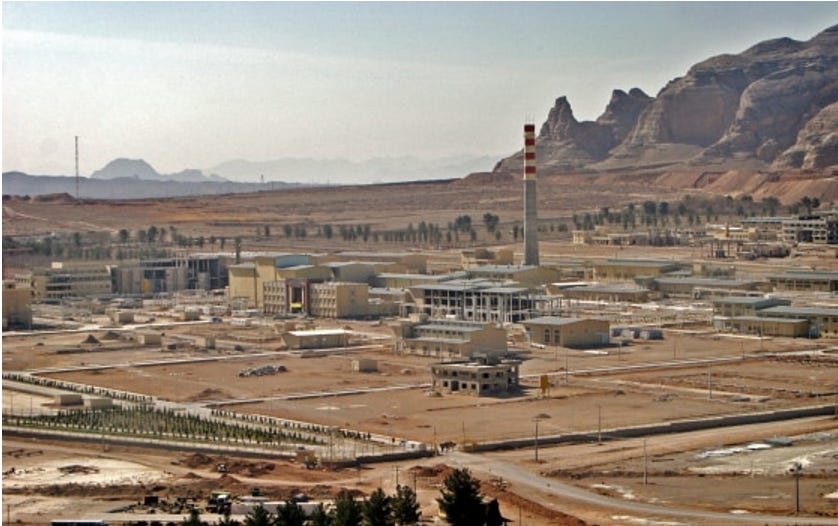
The argument made by many is that now is the last, best chance for Israel to strike Iran’s nuclear sites to slow down its march towards joining the nuclear weapon club. However, Iran’s nuclear facilities are dispersed, and some are built deep underground or into mountains, making them difficult to destroy. And although Israel may have some techniques for destroying those sites (multiple strikes seconds apart that literally dig down), the United States has not given Israel its massive bunker buster bomb which has the best chance of effectively destroying deeply buried targets. Also, because Iran’s nuclear sites are very dispersed, and some may be in secret locations (although I would bet Israel knows where they are), Israel would probably need to employ much of its air force and send those planes over multiple routes over many days to accomplish the mission. This would endanger the pilots, risk Israel’s vital military assets, and require perseverance to sustain the effort if faced with a worldwide political onslaught before the mission is accomplished. And even then, such an attack might only set Iran back 12-18 months. Furthermore, Iran would certainly respond, and there would be a risk of radiation releases that would intensify worldwide opposition. Nevertheless, an attack on the nuclear sites would in my mind be a rationale response given American reluctance to do so despite announced policy that the U.S. will not let Iran obtain a nuclear weapon and the closeness Iran is to having one. I also think it would be proportional given that Iran has already attacked Israel with the same ballistic missiles it would put a nuclear warhead on—and too many of those missiles got through. So too might a nuclear tipped one.
Economic Sites
I would put these in two classes:
Those that impact Iran’s exports thus diminishing Iran’s ability to earn foreign currency (mainly oil) but whose destruction would negatively impact the world’s economy
Those that only impact Iran domestically.
Seen through the above prism, destroying the facilities at Kharg Island would end Iran’s ability to export oil for some time to come, but it also could:
Anger China because it is the recipient of much of Iran’s oil exports (China does not care about violating sanctions placed on Iran).
Because Iran is responsible for 4% of the world’s oil production, ending Iran’s ability to export oil likely would raise the worldwide price of oil, angering may many nations.
Create an ecological issue from the resulting fires;
Invite a retaliatory response against Saudi Arabia and other Gulf nations that would further impact the world’s economy, especially if Israeli planes go through Saudi air space (Iran has already warned of that).
Prompt Iran to shut down the Persian Gulf bringing the U.S. navy into the fight.
Still, I question, should Iran be allowed to steer the future course of the region by making threats that if carried out might invigorate the world and the United States to destroy the Iranian regime?
On the other hand, taking out Iran’s domestic economic sites would cause minimal world impact, and confine economic damage to Iran, which might then contribute to further domestic instability and unrest already bubbling due to profound unhappiness in many quarters with the Islamic regime now in place. Key sites to destroy would be where power is produced and electrical grids. Destroying gas refineries at Bandar Abbas might be another option but that could cause ecological problems.
Missile and Drone Production and Storage Sites
Given what Israel has accomplished in Iran over the years, it seems likely that Israel knows where the missiles and drones are built and stored. Even the Alma Research and Education Center knows where many of them are as proven by their published articles. Surely the IDF knows too. And although some may be in very hardened locations, many likely are not. This would also have the tangential benefit of helping Ukraine since it would reduce Iran’s capacity to supply Russia with missiles and drones.
Leadership and Headquarters
My guess is that Iran’s highest leaders are on the move and in hiding. And while Israel may know where some of them are located some of the time, I highly doubt it knows where all of them are all the time. This is especially problematic for targeting purposes since most munitions, other than submarine launched, will take considerable time to get to Iran. On the other hand, headquarters locations are static, but to me, destroying them seems more symbolic than impactful.
Cyber
Israel’s cyber capabilities are suspected, but not published. However, it seems likely that Israel has the capability to shut down huge swaths of Iranian economic infrastructure.
My Thoughts
While Israeli leaders should always give weight to America’s views, it should do so more when Israel’s desired action is tactical rather strategic and have immediate concrete worldwide economic implications, or when Israel might well need America to bail it out should things go wrong. Recent reporting (and President Biden’s comments) suggest that the United States has asked Israel to not strike Iran’s nuclear or oil export targets and that the United States has offered an incentive package that includes political and weapon support. Therefore, even though it is not clear whether the American position is based on geopolitical analysis or election politics, and I don’t believe an incentive package that does not have an immediate return will prove worth the paper it is written on, I think Israel would be well advised to acquiesce to the request, albeit with a couple caveats, since Israel may need much more from the United States in the coming weeks. Thus, I think Israel may do some or all the following:
Limit the route of its warplanes to traveling through Syria/Iraq unless either Jordan or Saudi Arabia agree privately to allow the planes through (an agreement which might be difficult to achieve).
Attack one or more above-ground Iranian nuclear sites where the threat of radiation release is minimal as an example of what Israel can do and as proof that it will not be deterred from doing so.
Heavily attack Iranian domestic power production sites but leave the oil export sites alone.
Heavily attack Iranian missile and drone production and storage sites.
Leave Iranian command and control and headquarter sites alone (other than perhaps a symbolic attack) since little will likely be achieved long term by destroying them. And make no attempt to assassinate leaders (unless Iran is stupid enough to congregate many of them in one place) since there are plenty others available to replace the lost of just a few.
Use cyber capabilities to the best of Israel’s capabilities to disrupt any governmental function that helps it stay in power.
Make clear that if Iran fires any missiles or drones at Israel in response that Israel will destroy the facilities at Kharg Island and Bandar Abbas without delay and destroy other nuclear sites.
The goal that I base my tentative predictions on (only a fool would make a confident prediction) is to damage Iran’s economy and reduce its ballistic missile and drone capabilities, without impacting the world’s economy, and also give reason for the United States to be appreciative of Israel’s restraint while also making clear what Israel will do should Iran respond. But there are two caveats to Israel’s forbearance—that in exchange the U.S. will equip Israel with its bunker buster bomb, airplanes necessary to deliver the bunker busters if Israel does not already possess them, and the modern U.S. aerial tankers that it needs now, not later. In short, put Israel in a better position to do severe damage to Iran’s nuclear program should Iran not get the message this time.
Those yearning for peace and praying for de-escalation rather than escalation may feel despair rather than conviction regarding what I believe Israel’s path forward should be. However, I assure you, that I see Israel’s determined application of force as Israel’s and the region’s only path to peace. Peace cannot be made with the likes of Israel’s present enemies; it can only be earned through victory. The octopus’ arms are reeling but given time they can regenerate. Iran is on its backfoot, but it can regain its footing. Israel must continue to push while it has the advantage, it cannot afford giving its enemies the respite they likely long for and surely need. As such, the time to win this war is now. Otherwise, a worse war that will kill more civilians, perhaps an existential war for Israel, will be next. Therefore, Israel and its supporters must not let themselves to be lured into taking a holiday from history. Peace will not come when the world demands it, but only when Israel’s enemies want it because they have no other choice.
The coming days will reveal what Israel decides. I am hopeful that just as Hamas miss-stepped, and Hezbollah was too confident, that Iran’s second massive missile attack on Israel will prove to be a first step towards its leadership’s demise. Many Iranians hate the regime and there is nothing like failure coupled with adversity to hasten a government’s fall. At least let’s hope so.
Every day, whether I am in the United States or Israel, I use the Tzofar Red Alert app to notify me when there are missile, drone or terrorist incident warnings in Israel. This is the same information Israelis receive and it is sobering. Many times, day and night, I receive the warnings coupled with a map location. And although I could turn off the sound, I do not because I think it the least I can do to understand what daily life in Israel is like and to motivate me to continue with my advocacy and writing. I suggest you download the free app and see what you think. You can do so by clicking on one the links below. I guarantee it will be eye opening:
Also, if you have an interest in the danger Hezbollah presents and how it came to be, you might consider purchasing my book which can be obtained on Amazon here.
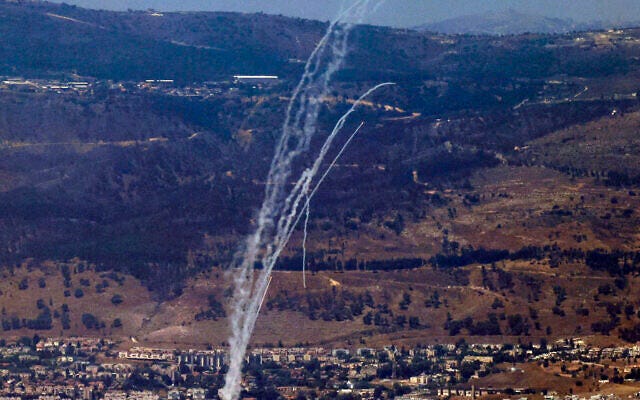
A Year of War: IDF Data Shows 728 Troops Killed, Over 26,000 Rockets Fired at Israel—Written by Emanuel Fabian for the Times of Israel—October 7, 2024
Let’s Not Forget What This War is About!
‘Not One girl Could Be Shown To Her Parents’: The Horrors Of Oct 7 – As Told By The Survivors—Written by Allison Pearson for the Telegraph—October7, 2024
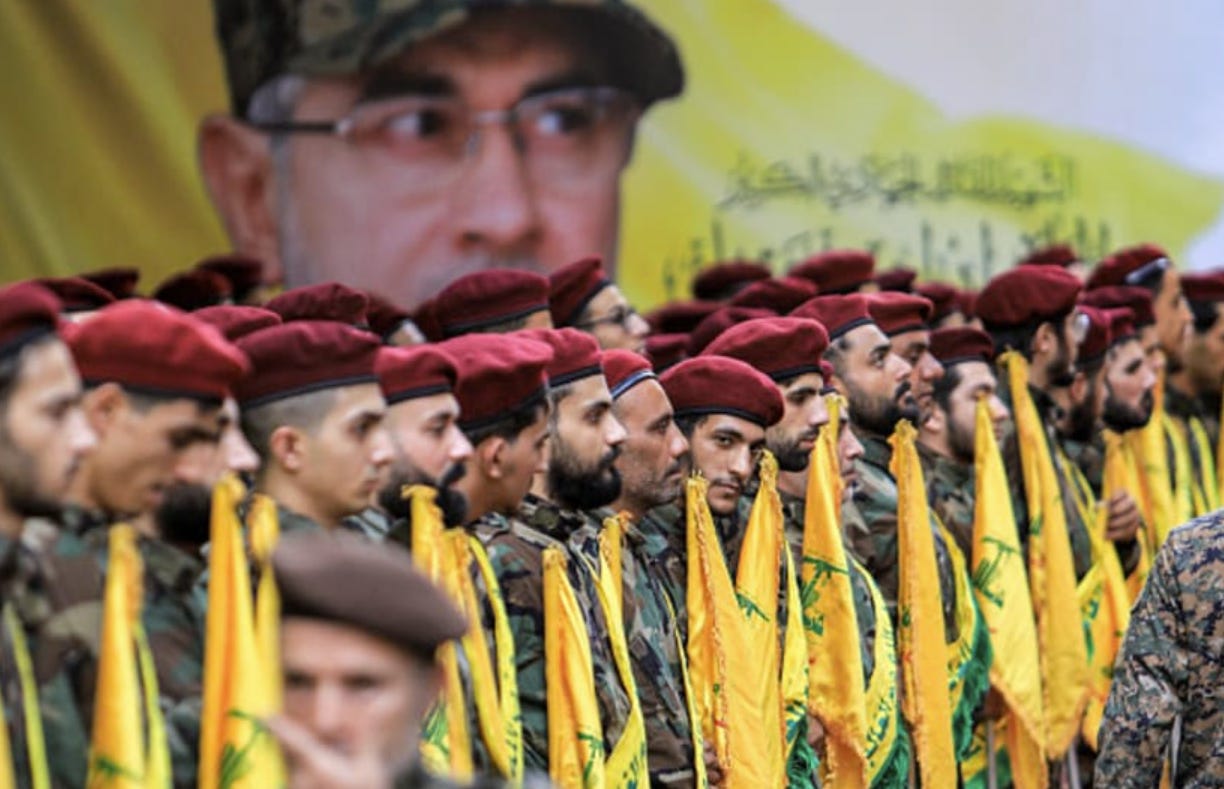
Experts: Hezbollah Unit 910 Ready to Target Israeli, Jewish Communities Worldwide—Written by Shaked Sadeh for the Jerusalem Post—September 28, 2024
Hezbollah’s Unit 910 (“Shadow Unit” / “Black Unit”) – A Worldwide Major Threat—Written by Tal Beeri for the Alma Research and Education Center—September 29, 2024

University Cancels Panel Because Author Is a ‘Zionist’—Written by Joe Nocera for the Free Press—September 23, 2024
Who Will Govern Gaza?—Written by Yaakov Lappin for the Jerusalem Strategic Tribune—September, 2024
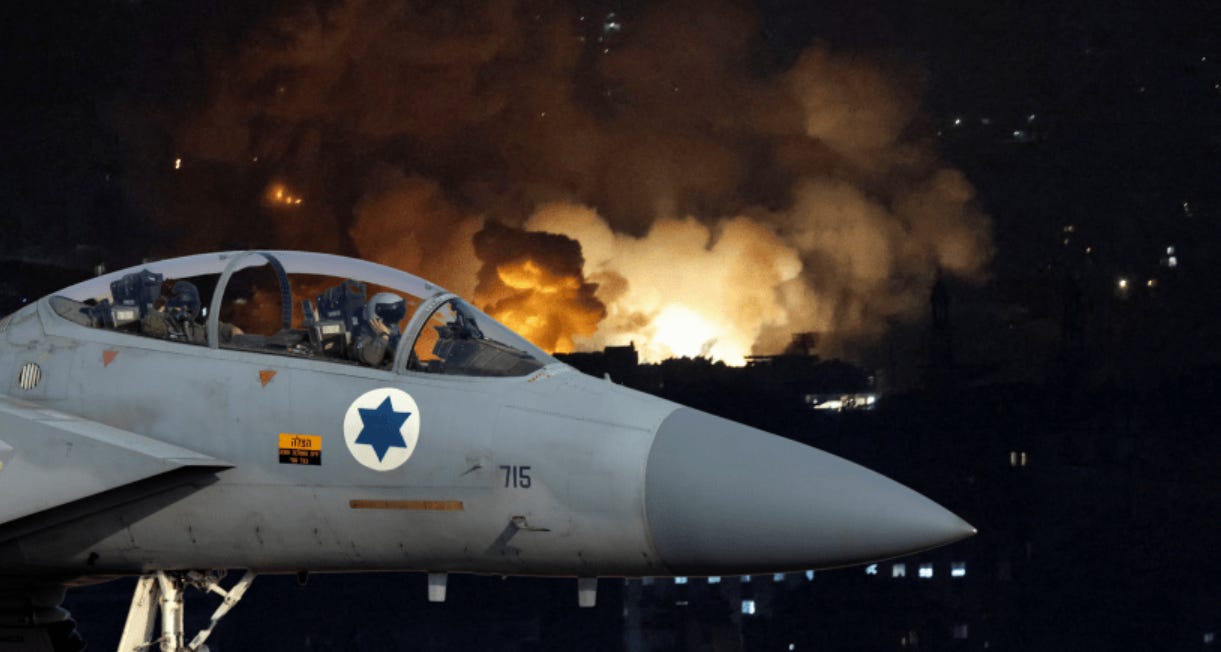
Inside Israel's Operation: Step-By-Step Breakdown of How Nasrallah was Eliminated—Written by Amir Bohbot for the Jerusalem Post—September 28, 2024
The Attack on Hezbollah’s Headquarters in Beirut and the Elimination of Nasrallah—Written by Sarit Zehavi and Tal Beeri for the Alma Research and Education Center—September 29, 2024
Images Offer a Close-Up Look at the Site of Nasrallah’s Assassination—Written by Hassan Ammar for AP—September 30, 2024
Killing of Nasrallah Shows the IDF Reasserting Primacy, Gradually Restoring Public Trust—Written by David Horovitz for the Times of Israel—September 29, 2024

Moody's Downgrade Due to Israel's Clueless Leadership, Gov't Mistrust - Expert—Written by Eve Young for the Jerusalem Post—September 29, 2024 —— This disappointing development smacks of something political (or more) as well as financial.
Children Were Shot and Burned Alive on October 7, Forensic Evidence Shows—Written by Ariela Ayalon for Ynet News—September 26, 2024
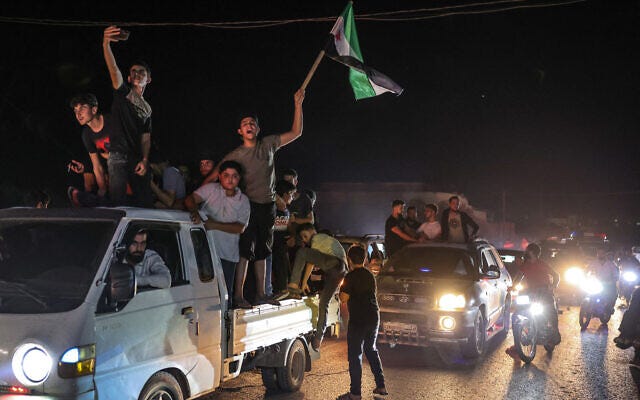
Pockets of Revelry at Nasrallah Killing Across Middle East, Including in Syria, Iran—Written by Times of Israel Staff and Agencies—September 29, 2024
Arabs Celebrate Unofficial Announcements of Nasrallah's Death -- Are They Ready for Peace with Israel?—Written by Sheri Oz for Israel Diaries—September 28, 2024
Arabs Welcome Elimination Of Hizbullah Secretary-General Hassan Nasrallah: Thank You Israel, Justice Has Been Served—Special Dispatch by Memri—September 30, 2024
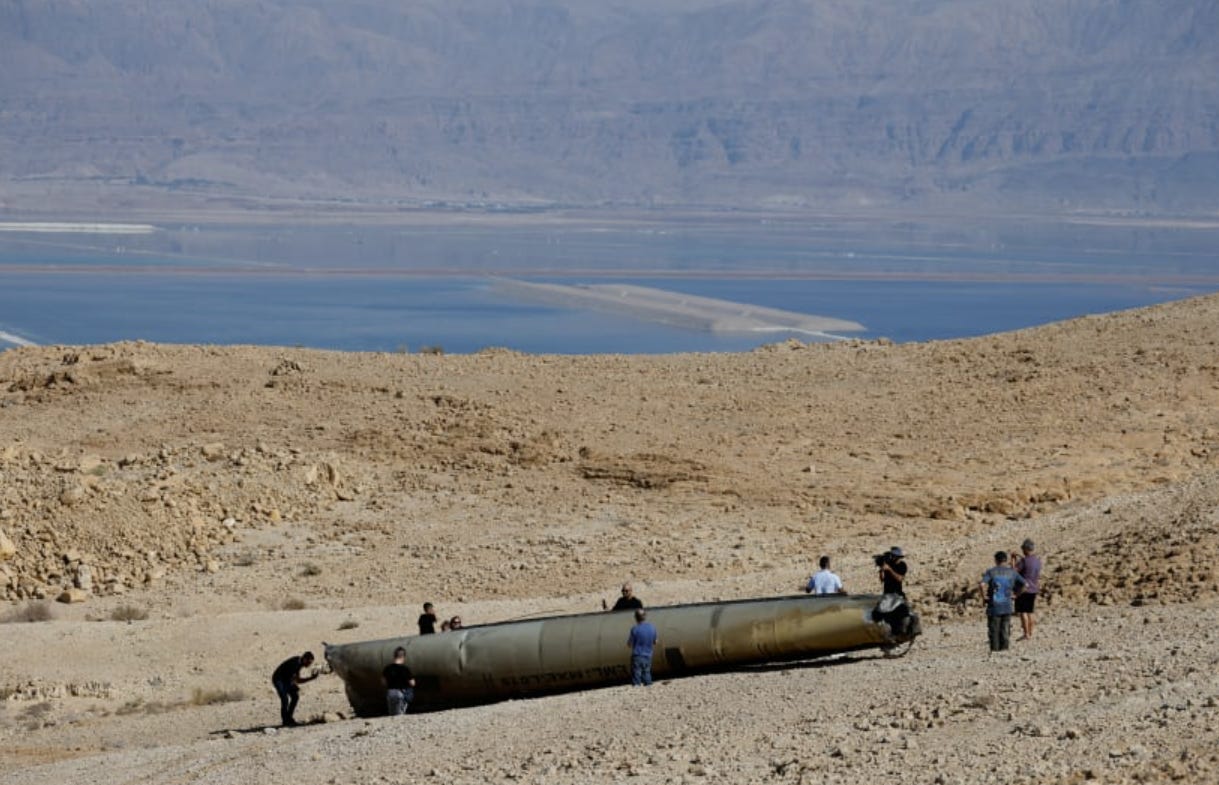
'Defense is More Expensive than Offense': The Cost of Iran's Missile Attack and Israel's Defense—Written by Udi Ezion for the Jerusalem Post—October 4, 2024
Israel’s Struggle with Hezbollah—A War Without End is now available in eBook and hardback format on Amazon and IngramSpark. This compelling narrative explores Hezbollah’s origins and cancerous growth, traces Israel’s response, and reveals Israel’s present readiness to meet Hezbollah’s challenge.
Cliff Sobin
Important Link—Alma Research and Education Center: Understanding the Security Challenges on Israel’s Northern Border



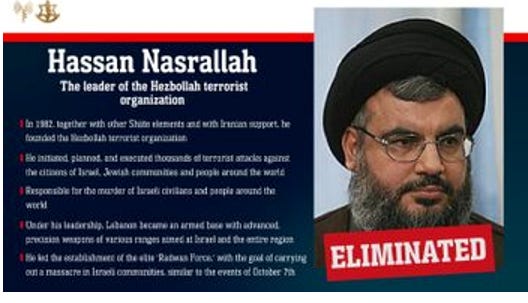
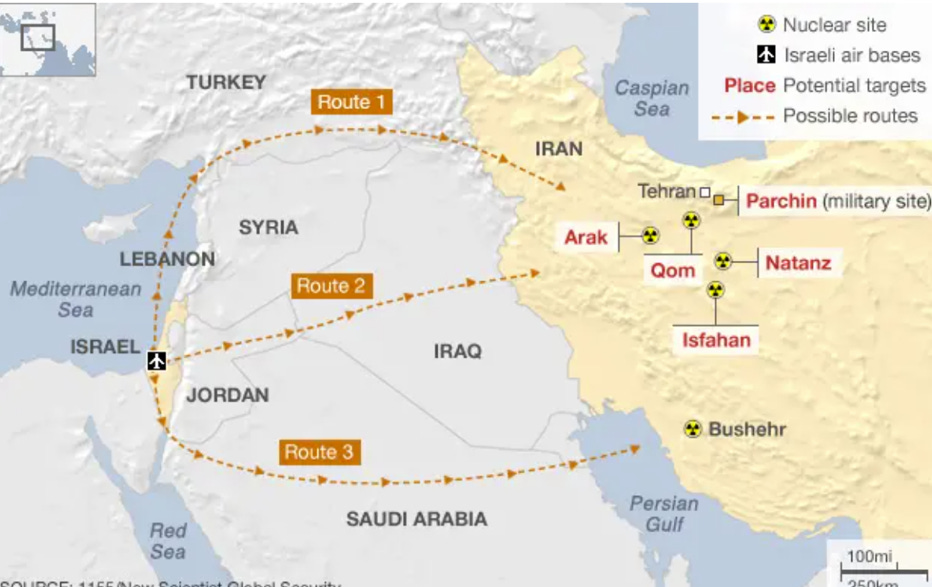
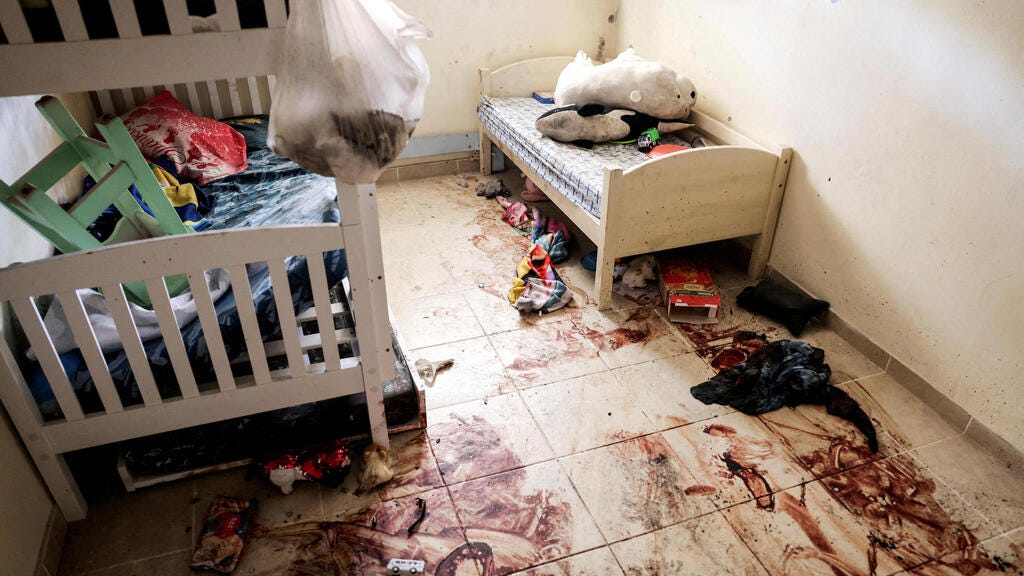
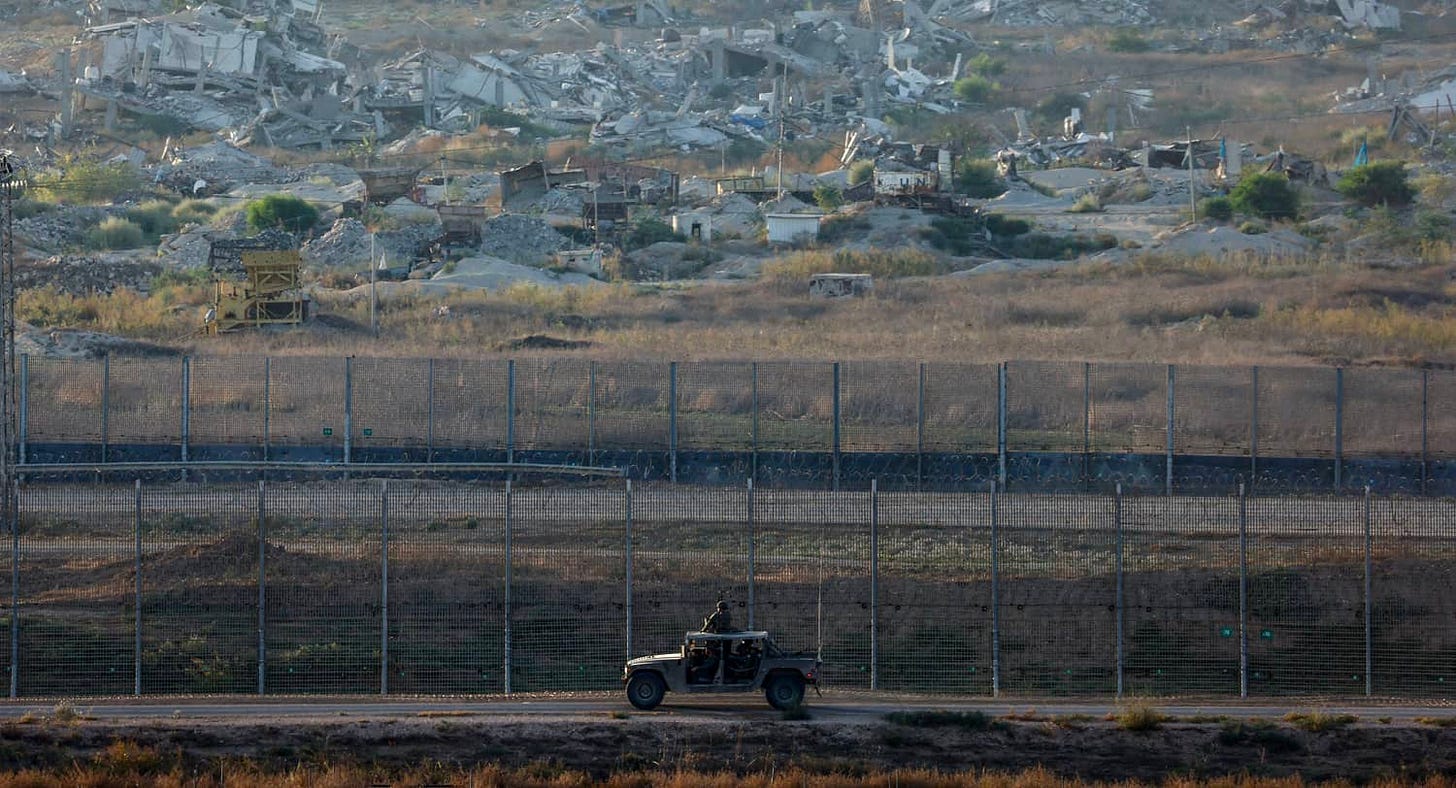

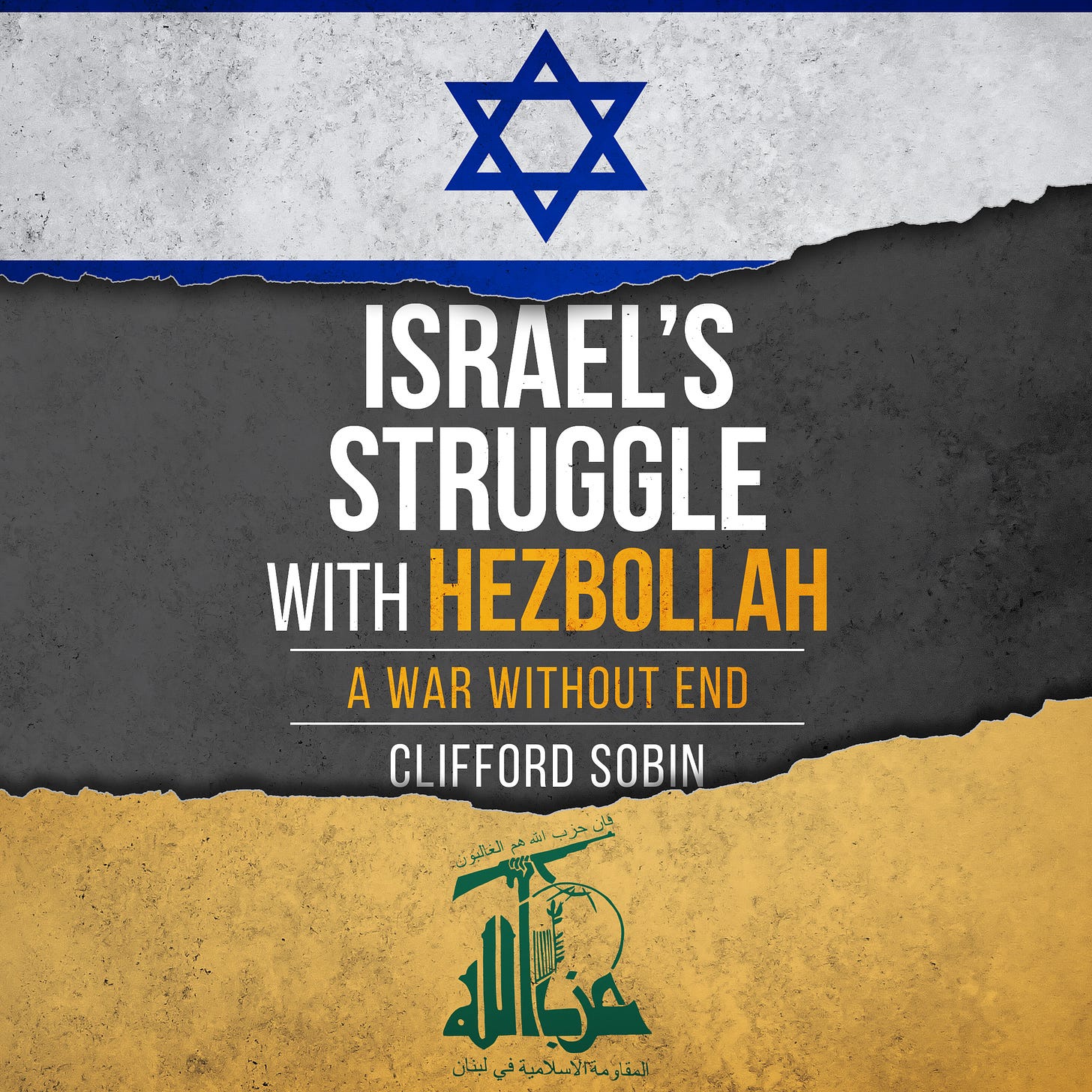
Such an important article. You bring out the choices Israel's leaders face and the potential consequences of each in a way that clarified why we can't just go and take out every significant site right now like so many of us want to see.
Thank you Mr. Sobin for showing with clarity the current options from a broad perspective 🙏🏾.